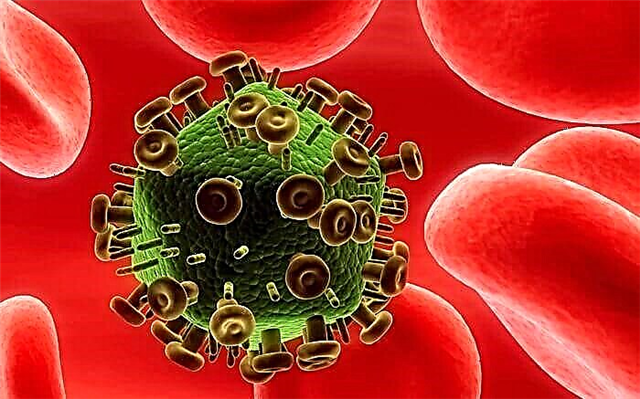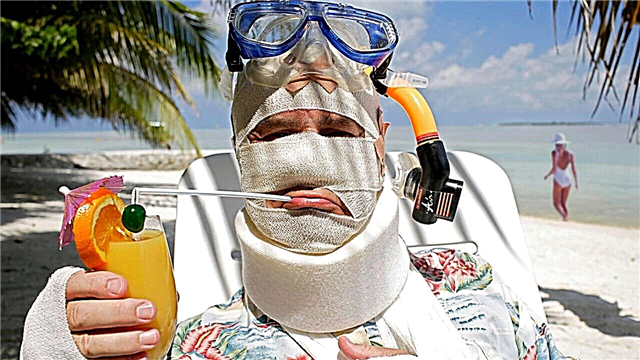The most terrible executioner of mankind was not war, but deadly diseases that mow down entire countries. Whether it was the Black Death in XIV century Europe or Ebola in modern Africa, human losses were astronomical.
We present to you the most terrible disease of humanity, both already defeated by modern medicine, and still raging on Earth.
10. Cholera
 This small intestine infection is transmitted primarily through drinking water or food containing the feces of an infected person. During a disease, a person begins diarrhea, vomiting, the body quickly loses fluid and severe dehydration occurs, even fatal.
This small intestine infection is transmitted primarily through drinking water or food containing the feces of an infected person. During a disease, a person begins diarrhea, vomiting, the body quickly loses fluid and severe dehydration occurs, even fatal.
Worldwide, about 5 million people suffer, and more than 100,000 people die from cholera every year.
9. Tetanus
 Probably in childhood, your parents told you to look carefully under your feet. Despite its banality, this advice is also relevant for adults. Indeed, tetanus infection usually occurs due to contamination of the wound, for example, after you hit your feet on a rusty nail or other rusty object.
Probably in childhood, your parents told you to look carefully under your feet. Despite its banality, this advice is also relevant for adults. Indeed, tetanus infection usually occurs due to contamination of the wound, for example, after you hit your feet on a rusty nail or other rusty object.
For the penetration of the pathogen Clostridium tetani into the body, a small scratch or cut is enough.
This disease is characterized by prolonged contraction of skeletal muscle fibers. It doesn’t sound very scary, but as the infection progresses, muscle cramps develop into convulsive contractions of the masticatory muscles (the mouth does not open and stretches into a kind of sardonic smile). And after some time, the respiratory and circulatory functions are disrupted, and the person dies from asphyxiation - respiratory arrest. Even in developed countries, tetanus deaths reach 17–25%, and in unvaccinated people in 80% of cases.
8. Polio
 If you are against vaccinating children, then look at the photo of one of the worst diseases in the world. Perhaps your opinion will change.
If you are against vaccinating children, then look at the photo of one of the worst diseases in the world. Perhaps your opinion will change.
In the 1940s and 50s of the twentieth century, before the start of mass vaccination, polio was the worst childhood illness and often led to death.
About 72% of people who become infected with polio have no symptoms. Twenty-five percent develop flu-like symptoms (e.g., sore throat, fever, fatigue, headache, nausea, abdominal pain) within a week or two after infection.
A small proportion of these people develop more serious symptoms, such as paresthesia (burning or stitching pain in the limbs), meningitis (infection of the brain and spinal cord), limb weakness and paralysis. This can lead to permanent disability and death if the respiratory muscles are affected.
7. Natural (black) smallpox
 After vaccination campaigns in the 20th century, smallpox became one of two infectious diseases that were declared completely eradicated (the other is cattle plague). However, before vaccination, according to various sources, it claimed 300 to 500 million lives in the 20th century alone.
After vaccination campaigns in the 20th century, smallpox became one of two infectious diseases that were declared completely eradicated (the other is cattle plague). However, before vaccination, according to various sources, it claimed 300 to 500 million lives in the 20th century alone.
The picture of the disease looks just awful. First, the patient is in fever, vomiting and headache. Then the body is covered with a rash, and not only the skin is affected, but also the internal mucous membranes (rectum, nose, larynx, trachea, urethra, etc.). Soon, smallpox turn into erosion. Before the invention of the vaccine, mortality from smallpox was about 40%, and according to some sources, up to 90%.
The last recorded case of death from smallpox occurred in the UK in 1978, and then variola (the medical name for smallpox) was considered completely defeated.
6. Leprosy (leprosy)
 The disease, which was mentioned in the Old Testament, has a long incubation period of two to three years, and symptoms usually begin with numbness or loss of sensation in a specific area of the skin.
The disease, which was mentioned in the Old Testament, has a long incubation period of two to three years, and symptoms usually begin with numbness or loss of sensation in a specific area of the skin.
Initially, one of the most terrible diseases in the world was considered a curse or punishment from God, and those suffering from leprosy were expelled from the settlements and were forced to wear special clothes or ring bells to warn healthy people about their approach.
Symptoms of leprosy vary from person to person and tend to progress over time; starting from mild hypopigmented skin lesions to blindness, deformation and severe disfigurement of the face.
Currently, leprosy is treatable and is considered one of the rarest diseases in the world.
5. Ebola
 Among the most terrible diseases of man, the most mysterious, perhaps, is Ebola. This is a serious, often fatal disease, with an average mortality rate of 50%.
Among the most terrible diseases of man, the most mysterious, perhaps, is Ebola. This is a serious, often fatal disease, with an average mortality rate of 50%.
Ebola was first discovered in 1976, and it is believed that bats were its "reservoirs."
The virus spreads easily from animals to humans and quickly spreads from person to person. Direct contact (through damaged skin or mucous membranes) with an infected person, animal, or with objects such as dirty needles and syringes is the most common way Ebola spreads.
Symptoms may appear two to 21 days later (on average 8-10 days) after exposure to the virus and include fever, severe headache, muscle pain and weakness, diarrhea, vomiting, bleeding and bruising, as well as death. Survivors develop antibodies that protect them from further infection for at least 10 years.
The strongest outbreak of Ebola in recent history has occurred between 2014 and 2016, mainly in Guinea, Sierra Leone and Liberia. The number of infected reached 28 616 people, and the deaths - 11 310 people.
4. Spanish flu
 It’s very unpleasant to get the flu, each of us knows this for ourselves. And the symptoms of this disease are probably familiar to you. But can hundreds of thousands of people die from the flu? Unfortunately, they can.
It’s very unpleasant to get the flu, each of us knows this for ourselves. And the symptoms of this disease are probably familiar to you. But can hundreds of thousands of people die from the flu? Unfortunately, they can.
Between 1918 and 1920, first in Spain, and then around the globe, a deadly outbreak of influenza broke out, which infected more than a third of the world's population and claimed the lives of 20-50 million people. Of the 500 million people infected during the 1918 pandemic, mortality rates were estimated at 10–20%.
The 1918 Spanish flu pandemic was significantly different from other flu outbreaks. Where the flu has always previously killed minors and elderly or already weakened patients, he began to exterminate hardy and perfectly healthy young people, leaving children and people with weak immune systems alive. In the late stage of the disease, severe bleeding began, due to which patients literally choked with their own blood.
3. Rabies
It’s funny to read headlines like “The fluffy beauty fox brought people a smile, fury and death.” However, one must remember that rabies is a disease that develops rapidly, and at a certain stage it is no longer possible to save a person.
It is easily transmitted from wild and domestic animals to humans. Moreover, not only a bite is enough, but also saliva on the skin. Through microcracks, the virus enters the body.
Most often, bats, foxes and wolves carry rabies from wild animals, and dogs and cats from domestic animals. The first signs that a wild animal is sick - its excessive credulity to humans, it allows you to stroke yourself, deceptively affectionately, and can begin to lick the hands and face of those who play with him. This is the so-called "silent" stage of rabies.
But what happens if a person with rabies does not go to the doctor. Warning, videos can scare impressionable people, pregnant women, and children.
2. AIDS
 First identified in the Democratic Republic of the Congo in 1976, HIV infection and its associated acquired immunodeficiency syndrome (AIDS) have established themselves as a global pandemic. From then until now, 31 to 35 million people have died from AIDS in the world.
First identified in the Democratic Republic of the Congo in 1976, HIV infection and its associated acquired immunodeficiency syndrome (AIDS) have established themselves as a global pandemic. From then until now, 31 to 35 million people have died from AIDS in the world.
The vast majority of people living with HIV live in sub-Saharan Africa, where 5% of the population or about 21 million people are infected.
Doctors have developed new treatments that make HIV much more manageable, and many of those infected continue to have productive and long lives.
1. Bubonic plague
 Among the most terrible human diseases, the bubonic plague stands apart. She left a terrible mark in world history, causing changes in the economy, culture, art, medicine and the demographic situation. In the Middle Ages, up to 60% of the inhabitants of the European continent died from the Black Death.
Among the most terrible human diseases, the bubonic plague stands apart. She left a terrible mark in world history, causing changes in the economy, culture, art, medicine and the demographic situation. In the Middle Ages, up to 60% of the inhabitants of the European continent died from the Black Death.
There were two pandemics of the bubonic plague that devastated entire continents.
- The Plague of Justinian (541-542). The death toll is 25 million people.
It is believed that the plague of Justinian killed perhaps half the population of Europe. It was an outbreak of bubonic plague that hit the Byzantine Empire and the port cities of the Mediterranean. She is considered the first recorded bubonic plague incident. The plague of Justinian left its mark in the world, killing up to a quarter of the population of the Eastern Mediterranean and 40% devastating the city of Constantinople.
- Black death (1346-1353 biennium). The death toll is 75–200 million.
This outbreak of plague struck Europe, Africa and Asia. It is believed that the plague originated in Asia, and most likely began to "travel" across the continents through fleas living on rats, which in large numbers lived on merchant ships. Ports, which were then major urban centers, were ideal breeding grounds for rats and fleas, and therefore the insidious bacterium Yersinia pestis thrived, devastating three continents in its path.












